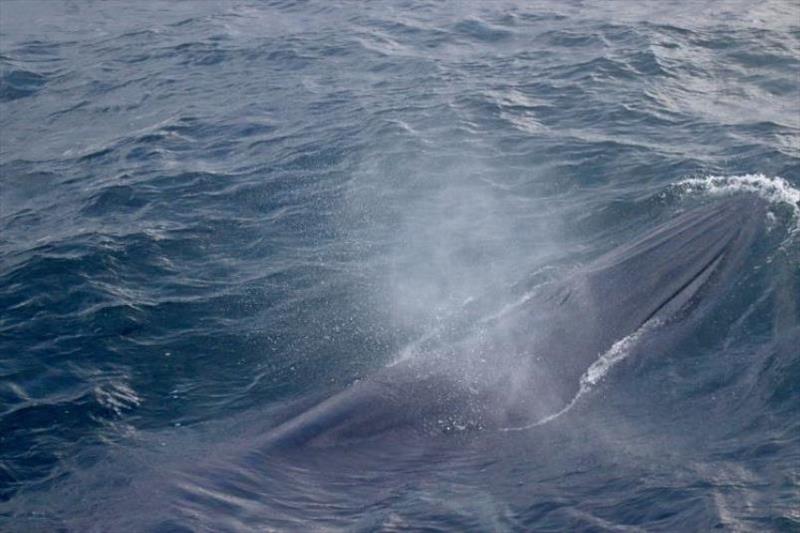
A rare sighting of endangered rice's whales
by NOAA Fisheries 5 Aug 2023 15:44 UTC

With an estimated population of fewer than 100 individuals, scientists were thrilled to sight Rice's whales © NOAA Fisheries / Felipe Triana (Permit #21938)
During the last leg of NOAA's Southeast 2023 Vessel Surveys For Abundance and Distribution of Marine Mammals and Seabirds project, the research started with a lot of excitement.
The marine mammal observers sighted a Rice's whale blow (the spray of water that occurs when the animal takes a breath at the surface) in the distance. This was a thrilling sighting because Rice's whales are endangered, with an estimated population of fewer than 100 individuals.
The team was surveying in the northeastern part of the Gulf of Mexico, where Rice's whales have been predominantly sighted in previous surveys. Historical whaling records suggest these baleen whales may have been found throughout a broader area of the Gulf, rather than just this northeastern portion of the Gulf where they are most frequently sighted today.
Scientists had the NOAA Corps Officers move the NOAA Ship Gordon Gunter towards the different blows that had been sighted. "Uber to bridge, come to steerage," said Tony Martinez, the field chief scientist. The ship came to steerage, a speed slow enough to just be able to steer. Coming to steerage allows scientists to get a good view of whales during permitted surveys, while still maintaining a distance that is safe for the whales. After coming to a full stop, one of the whales surfaced closer to the ship. The team was able to get a variety of photographs, which can be used to identify the whale.
"Getting multiple, clear photographs that identify the Rice's whale is critical to our knowledge of this endangered species. Making accurate identifications and expanding our knowledge about the species helps us to protect the population," stated Martinez.
As we learn more about Rice's whales through the collection of data during surveys like this one, we gain the information needed to effectively manage the species and potential impacts from threats, such as vessel strikes, activities associated with offshore energy exploration and extraction, and fishery bycatch.
While observers keep visuals on the whale, other scientists, known as acousticians, are listening for marine mammal sounds with a hydrophone (underwater microphones). For the acousticians, this species of whale is challenging to identify. Shannon Merkle, an acoustician, explained why it is challenging to hear Rice's whale sounds, "The Rice's whale has a very low frequency, so their sounds get muffled with the sound of the vessel. It is challenging to hear them from the vessel. So, our team deploys SoundTraps to gain acoustic information on the species."
On this leg of the survey, the acousticians are hoping to deploy more SoundTraps. SoundTraps are moored acoustic recorders strategically placed in various oceanic locations that provide data on the spatial distribution of whales and dolphins over time. During this particular whale sighting, the team focused on photo identification. Later, if the team gets lucky with other sightings during good weather, they may have the opportunity to tag or biopsy an animal. The science crew is looking forward to what the rest of the trip has in store!
Help keep whales safe
Harassing, harming, pursuing, wounding, killing, capturing, or collecting protected marine mammals is prohibited by the Endangered Species Act and Marine Mammal Protection Act. Observe marine animals from a safe and respectful distance and never approach or touch them. Observe whales from a distance of at least 100 yards—the length of a football field. Please report whale sightings to (877) WHALE HELP (877) 942-5343.